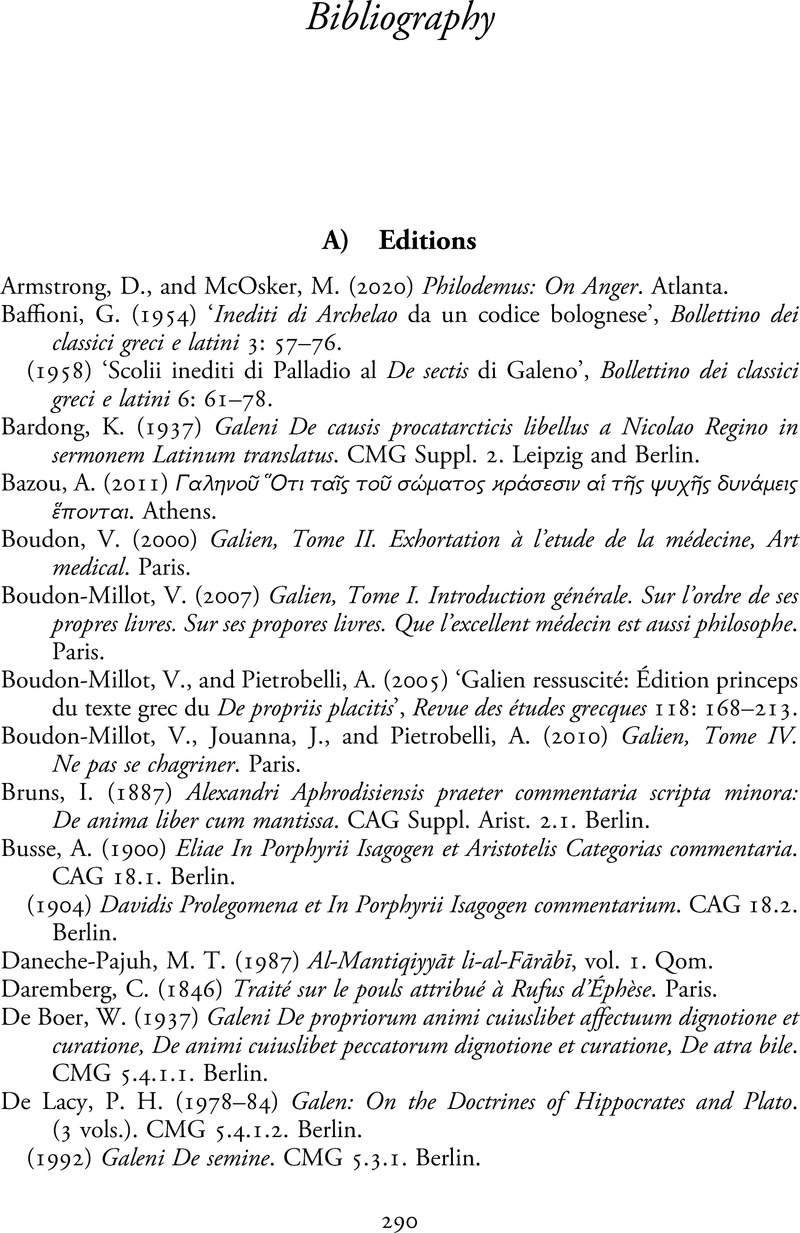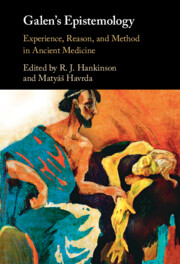Book contents
- Galen’s Epistemology
- Galen’s Epistemology
- Copyright page
- Contents
- Abbreviations
- Introduction
- Chapter 1 ‘Do I Wake or Sleep?’
- Chapter 2 Galen’s Empiricist Background
- Chapter 3 Discovery, Method, and Justification
- Chapter 4 From Problems to Demonstrations
- Chapter 5 Galen’s Notion of Dialectic
- Chapter 6 The Relationship between Perceptual Experience and Logos
- Chapter 7 Galen against Archigenes on the Pulse and What It Teaches Us about Galen’s Method of Diairesis
- Chapter 8 On Sense-Perception
- Chapter 9 Reason and Experience in Galen’s Moral Epistemology
- Chapter 10 The Arabic Alexandrians’ Summary of Galen’s On the Therapeutic Method
- Chapter 11 What Level of Certainty Can Medical Sign-Inference Reach?
- Bibliography
- Index of Passages
- General Subject Index
- References
Bibliography
Published online by Cambridge University Press: 04 May 2022
- Galen’s Epistemology
- Galen’s Epistemology
- Copyright page
- Contents
- Abbreviations
- Introduction
- Chapter 1 ‘Do I Wake or Sleep?’
- Chapter 2 Galen’s Empiricist Background
- Chapter 3 Discovery, Method, and Justification
- Chapter 4 From Problems to Demonstrations
- Chapter 5 Galen’s Notion of Dialectic
- Chapter 6 The Relationship between Perceptual Experience and Logos
- Chapter 7 Galen against Archigenes on the Pulse and What It Teaches Us about Galen’s Method of Diairesis
- Chapter 8 On Sense-Perception
- Chapter 9 Reason and Experience in Galen’s Moral Epistemology
- Chapter 10 The Arabic Alexandrians’ Summary of Galen’s On the Therapeutic Method
- Chapter 11 What Level of Certainty Can Medical Sign-Inference Reach?
- Bibliography
- Index of Passages
- General Subject Index
- References
Summary

- Type
- Chapter
- Information
- Galen's EpistemologyExperience, Reason, and Method in Ancient Medicine, pp. 290 - 309Publisher: Cambridge University PressPrint publication year: 2022



